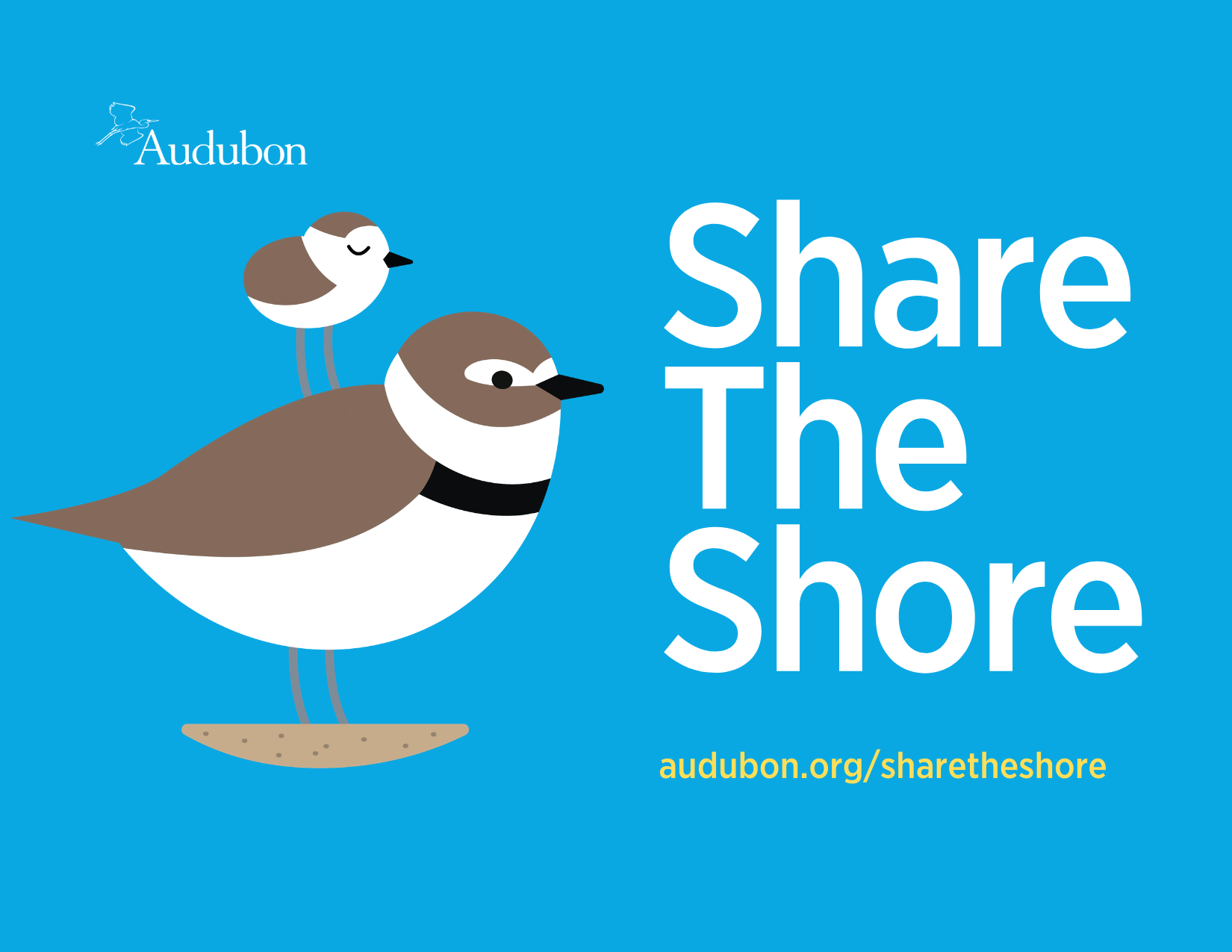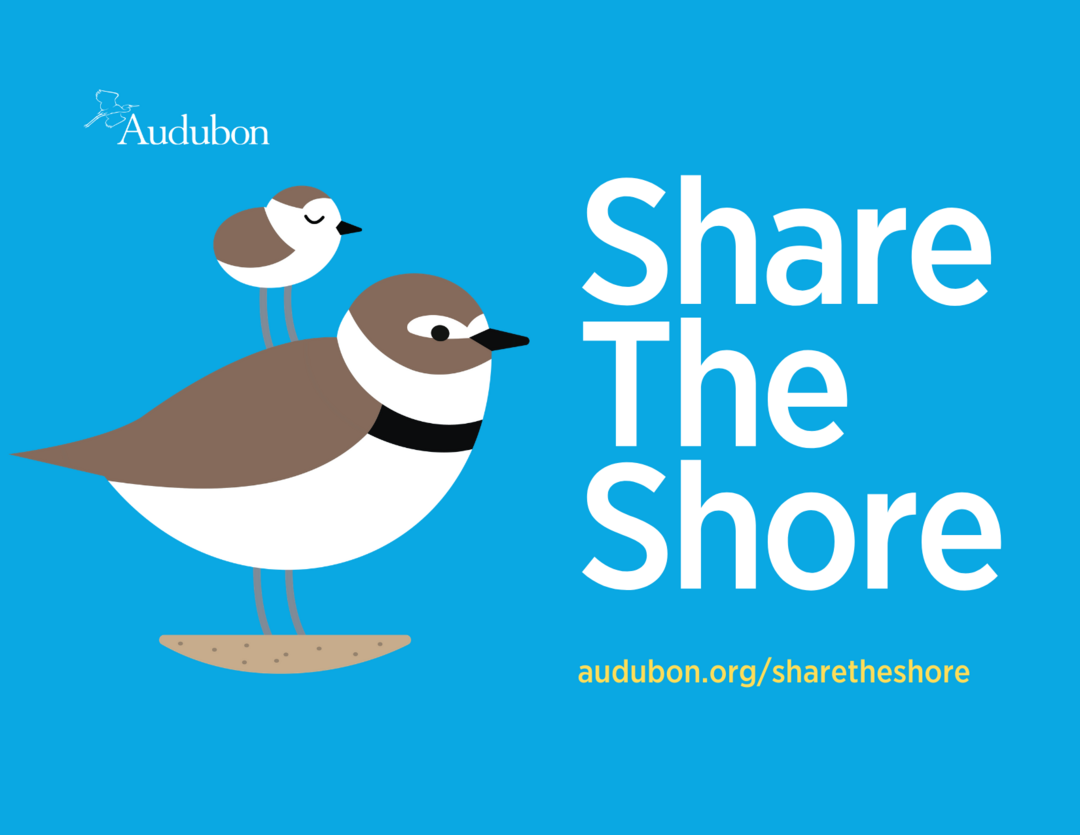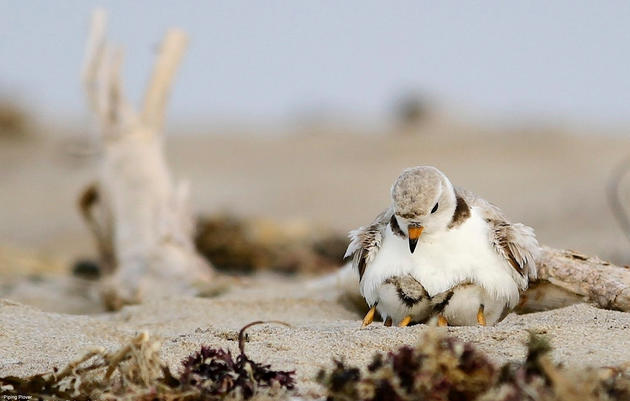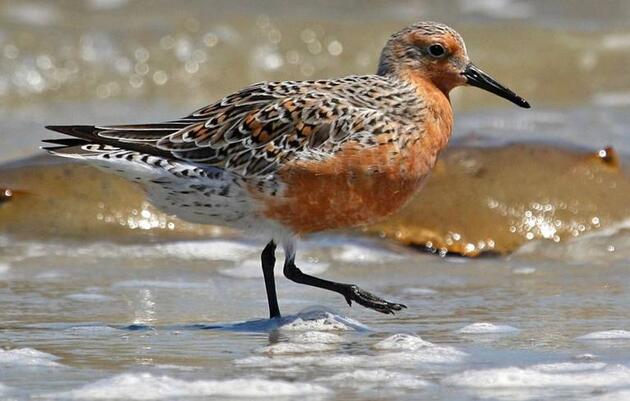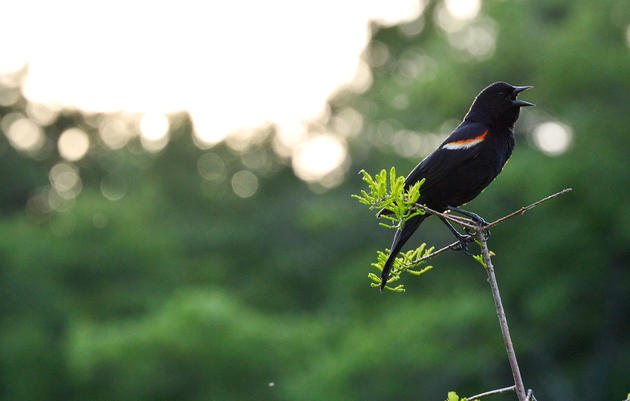Every time I take a trip to the beach, I’m reminded of why we do the work that we do. There is something extraordinary about watching a flock of Red Knots comb the beach for food in the spring, listening to a pair of American Oystercatchers bark over their territory in early summer, or witnessing a Least Tern hunting for fish with acrobatic nose-dives in to the water. Now as fall sets in during a stressful year, I hope you’re taking the time to enjoy (from a distance) the incoming displays of migratory fall shorebirds on South Carolina’s beaches and impoundments.
As these scenes become scarcer due to increased development, human disturbance, more frequent storms, rising sea-level, and accelerated erosion associated with a changing climate (wow that’s a long list)—the work we do to protect coastal birds is more important than ever. Please read on for some updates on Audubon South Carolina’s recent coastal work to protect birds and the places they need.
Social distancing is important for shorebirds and stewards
While 2020 has been a difficult year for most people, the COVID-19 pandemic did provide some brief but much-needed respite for seabirds and shorebirds passing through the state this spring and early summer. Thanks to widespread beach and ramp closures, these birds were able to enjoy their pit-stops in South Carolina largely undisturbed before continuing on their multi-thousand mile migrations. Some species were even able to establish nests in places they normally would not be able to!
This break was a blessing in light of Audubon’s need to push pause on our Shorebird Steward program for much of this season to protect the health and safety of our volunteers and slow the spread of COVID-19.
In a normal year, these trained volunteers are vital to protecting sensitive nesting areas while engaging and educating thousands of beachgoers on the importance of coastal bird conservation. However, together with our partners and dedicated volunteers, we continue to do everything in our power to keep beaches safe for birds.
This includes the efforts of organizers at Hunting Island, Dewees Island, Huntington Beach State Park, and Isle of Palms, who—using best practices from Audubon and social distancing guidelines—continued their own stewardship efforts and helped ensure the protection of species like Wilson’s Plovers, Least Terns, American Oystercatchers, and Red Knots.
Additionally, I spent most of my weekends and holidays patrolling Bird Key Stono in Audubon South Carolina’s 15’ Boston Whaler. This Seabird Sanctuary located between Folly and Kiawah islands has been home to one of the largest Brown Pelican nesting colonies on the Atlantic coast for the last few years. While most boaters are happily aware that it is illegal to land on the island, it only takes one person walking too close to a colony for too long to cause the entire colony to abandon their nests—and I did stop and educate several boaters who were unaware of the rules.
We’re anticipating a full report on nesting seabird numbers from the South Carolina Department of Natural Resources later this year, and will keep you posted on their findings.
A Comprehensive Beach Guide for Dog Owners
To educate dog-owners on the importance of protecting coastal birds, while also helping them navigate the complicated patchwork of beach rules and regulations, we created a comprehensive guide to South Carolina's beaches for dog-owners, which lists all posted dog rules for every beach in the state. Please take a look and share this guide with your friends, family, and social media networks to get the word out!
Crab Bank Construction
In 2018 and 2019, individual donors, non-profits, and private businesses alike banded together to raise the funds needed to restore Crab Bank, a Seabird Sanctuary island and once-thriving rookery in Mount Pleasant, SC, that succumbed to erosion in 2018.
When the island is restored it will house thousands of nesting coastal birds and protect the Mount Pleasant coastline from wind and waves. According to reports from the South Carolina Department of Natural Resources (SCDNR) and the Army Corps of Engineers: construction will begin fall 2021 and be ready in time for nesting season 2022.
In the meantime, Audubon South Carolina remains hard at work on the project, lining up physical and biological monitoring protocols, economic valuation, and educational programming with our partners like the SCDNR, Coastal Expeditions Foundation, Coastal Conservation League, and SC Wildlife Federation.
South Carolina Coastal Bird Conservation Coalition
Beyond raising enough money to save the defunct Seabird Sanctuary, the community’s huge outpouring of support for Crab Bank generated enough contributions to seed the first-ever state-held fund dedicated to coastal bird conservation: the South Carolina Coastal Bird Conservation program, or SCCBC.
As a member of the SCCBC advisory board, Audubon South Carolina was pleased to endorse the program’s first project since Crab Bank: hiring a seasonal Shorebird Steward to safeguard the hemispherically important Cape Romain National Wildlife Refuge.
Neighbor to neighbor education and stewardship is a critical piece of coastal bird conservation work in South Carolina, and according to SCDNR, who oversees the SCCBC, the new steward, Jennifer Cahill, has been doing an outstanding job keeping people away from the only viable Black Skimmer colony in the state.
Bay Point Island Development Proposal
Bay Point Island is a privately owned barrier island just north of Hilton Head, SC. There is a proposal being considered by Beaufort County to construct a resort on the island under a special use “eco-tourism” permit. After reviewing the specifics of this current proposal, Audubon South Carolina Audubon has determined that it is not compatible with protecting bird species that rely on the island, including those that are federally listed as threatened or endangered, such as the Piping Plover and Red Knot, and others that are state listed species, such as the Least Tern and Wilson’s Plover. We are also concerned that Beaufort County residents and taxpayers will be forced to bear the expense of emergency response and recovery when the development floods, and suffers degraded water quality when septic tanks leak or fail due to sea-level-rise.
For these reasons, Audubon South Carolina opposes the proposal for Bay Point Island. We hope that the Beaufort County Zoning Board of Appeals, the body responsible for approving the development, will agree with our assessment. As of this writing, the Board has yet to set a date for its next meeting to discuss the proposal.
Horseshoe Crab Recovery
Once-massive events, horseshoe crab spawning has become almost nonexistent in South Carolina, and Audubon – and the shorebirds – have taken notice. Between overharvest for bait and biomedical bleeding, this iconic species, and the bird species like Red Knots that rely on them, are in crisis. Audubon South Carolina is proud to join the newly-formed Horseshoe Crab Recovery Coalition—working alongside other leading national conservation organizations to help ensure the future of the American Horseshoe Crab. We look forward to updating you on these important efforts.
Coastal Barrier Resources Act
In July, the National Audubon Society filed suit to preserve protections for coastal ecosystems provided by the Coastal Barrier Resources Act (CBRA). The Act helps protect 3.5 million acres of undeveloped U.S. barrier islands, beaches, and wetlands by prohibiting most federal expenditures that would promote development of them—and according to a recent study has already saved taxpayers $9.5 billion, and is projected to save an additional $11-109 billion over the next 50 years.
Audubon’s suit challenges an unlawful Department of Interior “Excavation Rule” that would allow taxpayer money to be used to dredge hundreds of thousands of tons of sand from protected coastal areas that provide important habitats for South Carolina’s coastal birds – like terns and plovers – and natural flood buffers for coastal communities. As we continue to experience annual named storms and anticipate a particularly active 2020 hurricane season, the importance of preserving these natural flood barriers to enhance the resilience of South Carolina’s coastal communities is even clearer.
If you have any questions or comments, would like to volunteer, or are interested in helping protect coastal birds with a financial contribution, please email me any time at nolan.schillerstrom@audubon.org.
All the best!
Nolan Schillerstrom
Coastal Program Associate

